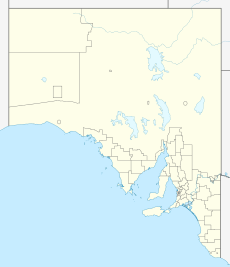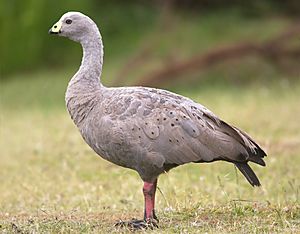Lake Newland Conservation Park facts for kids
Quick facts for kids Lake Newland Conservation ParkSouth Australia |
|
|---|---|
|
IUCN Category Ia (Strict Nature Reserve)
|
|
| Nearest town or city | Elliston |
| Established | 1 August 1991 |
| Area | 88.8 km2 (34.3 sq mi) |
| Managing authorities | Department for Environment and Water |
| Website | Lake Newland Conservation Park |
| See also | Protected areas of South Australia |
Lake Newland Conservation Park is a special protected area in South Australia. It's located on the west coast of the Eyre Peninsula. This park is about 10 kilometers north of the town of Elliston.
The park was created in 1991 to protect Lake Newland, which is a very salty lake. It also protects the important wetlands around it. This land has always been important to the Wirangu people, who are the traditional owners.
Contents
About Lake Newland Park
This conservation park stretches for 20 kilometers along the coast. It includes the towns of Elliston, Colton, and Talia. The park also has large sand dunes that sit between the lake and the sea.
How the Land Formed
The land in the park is quite new in terms of geology. Over time, sand dunes formed a barrier. This barrier separated the Southern Ocean from a low area. This low area was made of limestone, which is common on the western Eyre Peninsula.
Wirangu People and History
The Wirangu people are the traditional owners of this land. In the 1800s, European settlers moved into the area. They started farming the land near the lake. This stopped the Wirangu people from reaching the lake, dunes, and sea.
After a difficult event in May 1849 at Waterloo Bay, the area became a place that Aboriginal people avoided for a long time. They did not return to the area until 2018. That year, a special cleansing ceremony was held.
Naming the Lake
Edward John Eyre named Lake Newland. He named it after his friend, Richard Francis Newland. They were traveling together during Eyre's expeditions in 1839. The conservation park was named after the lake when it was created in 1991. More land was added to the park in 1996.
Park Classification and Features
Lake Newland Conservation Park is a very strict nature reserve. It is classified as an IUCN Category Ia protected area. This means it's protected for its natural features.
The sand dunes in the park are always moving. They slowly move towards the lake and wetlands. These wetlands also get fresh water from springs in the limestone. The area gets about 427 millimeters of rain each year.
Plants of the Park
The park has moving sand dunes and wetlands near the coast. You can find different types of plants here.
- Some areas were cleared in the past. Now, drooping sheoak trees are growing back. You can also see scattered native shrubs.
- Around the lake, you'll find plants that like salt. These include Sarcocornia and Tecticornia species.
- The coastal shrublands have many plants like coastal daisybush. Other plants include coast beard-heath, seaberry saltbush, long-pod wattle, coastal umbrella bush, and cockies tongues.
- Near the beach, the foredunes have Spinifex hirsutus grassland. You'll also see coast saltbush and knobby club-rush.
- In the low, wet areas called swales, there are swamp paperbarks and dryland tea-trees. These grow over salt-tolerant shrubs.
Important Bird Area
The entire conservation park is part of an Important Bird Area (IBA). This area is called the Lake Newland Important Bird Area. BirdLife International has identified it as important for birds.
The IBA is special because it regularly hosts many Cape Barren geese. More than 1% of the world's population of these geese visit the park. They come here during the dry season from their breeding islands. The park is also home to many fairy terns and hooded plovers. You might also spot Slender-billed thornbills in the park.
Aboriginal Mythology
Lake Newland is a very important place in Aboriginal Australian mythology. It is especially significant to the Wirangu people. The lake is connected to the famous story of the Seven Sisters. This story is based on the star constellation known as the Pleiades.
The Seven Sisters story is a creation story that is part of a special songline. In the story, a hunter named Tgilby falls in love with the seven sisters. Tgilby is linked to the Orion constellation. The sisters are known as Yugarilya. Tgilby chases them out of the sky and across the earth. As he chases them, the Yugarilya are also chasing a snake named Dyunu.



